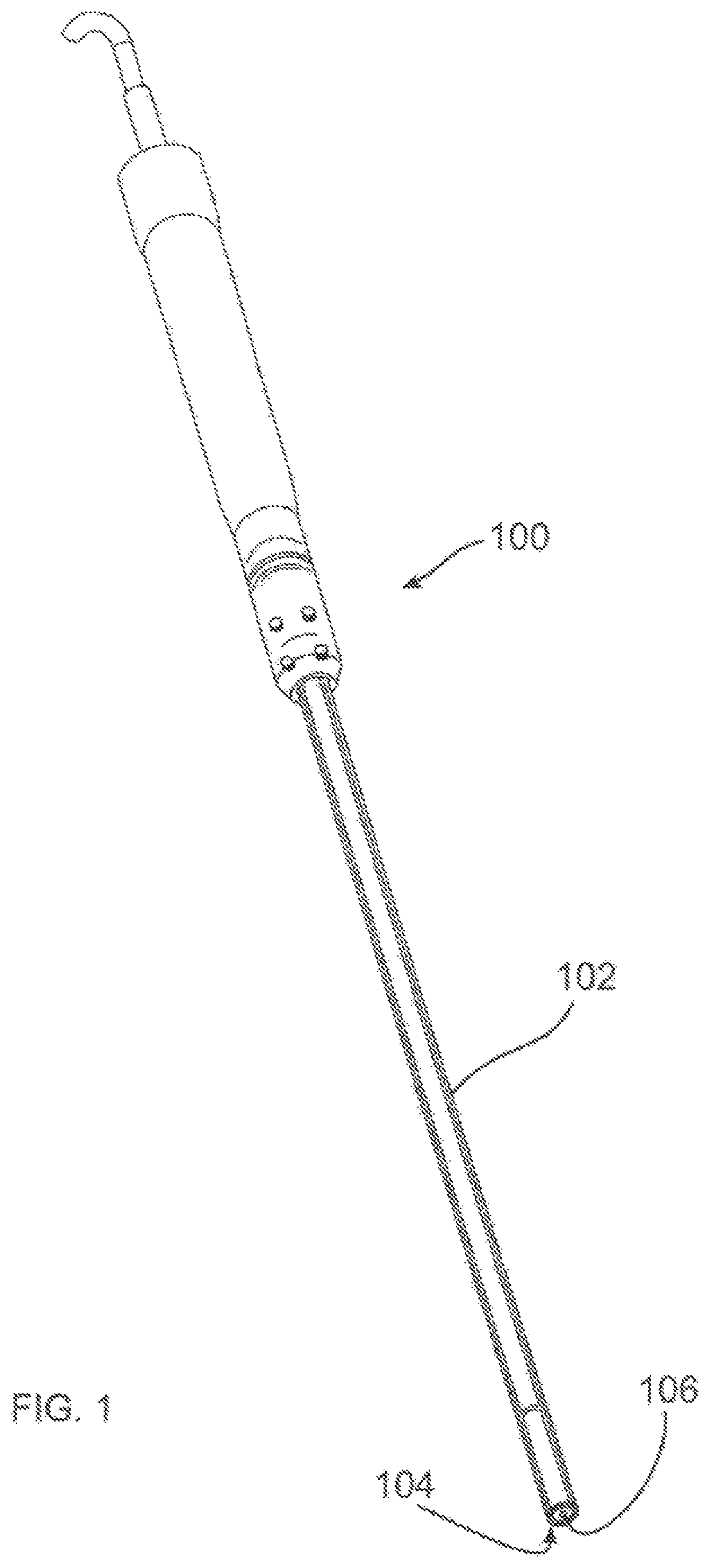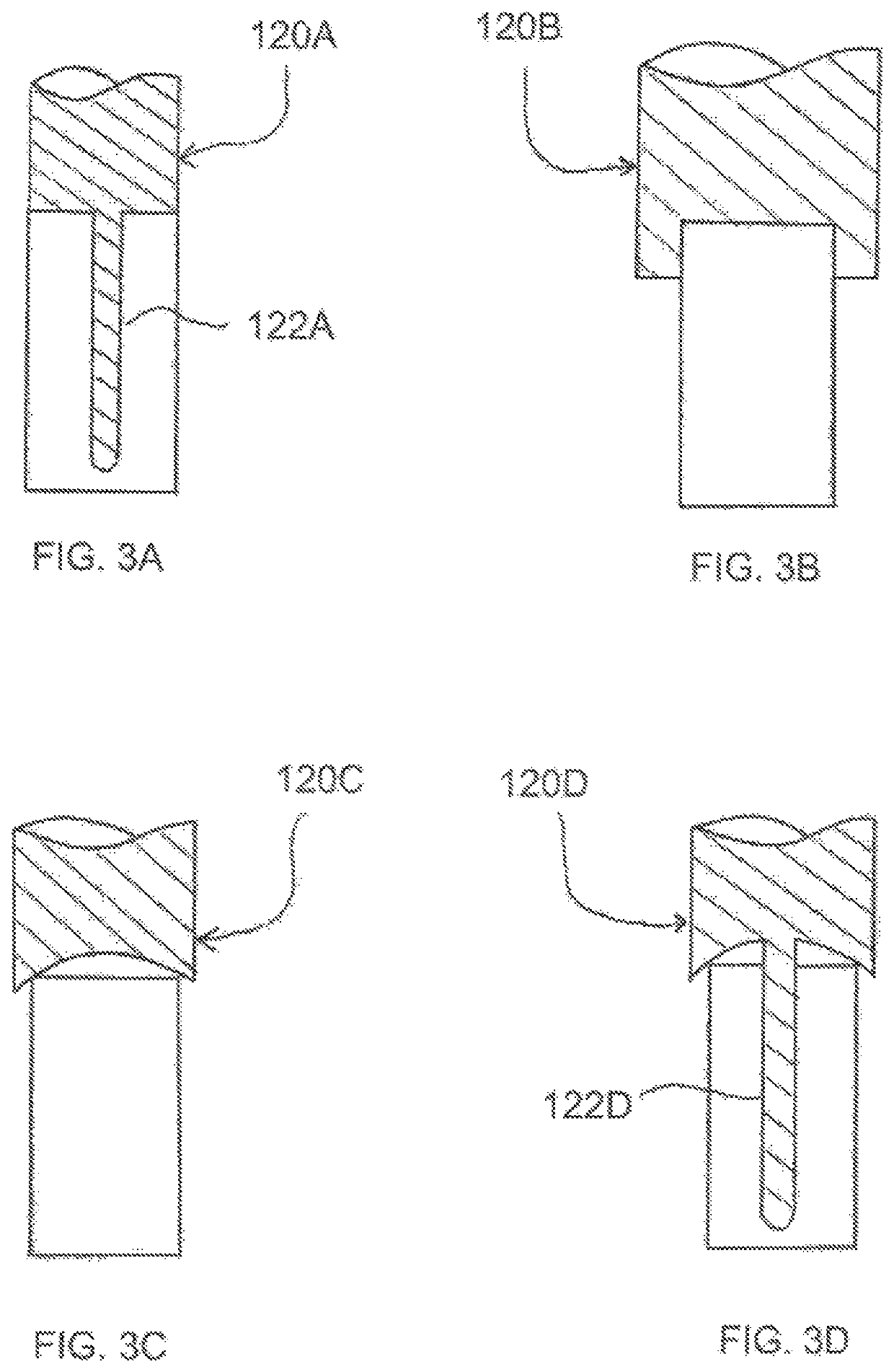Method and devices for intracorporeal bonding of implants with thermal energy
a technology of thermal energy and tissue, applied in the field of tissue fixation and implants, can solve the problems of material requiring the characteristic of softness and tackyness
- Summary
- Abstract
- Description
- Claims
- Application Information
AI Technical Summary
Benefits of technology
Problems solved by technology
Method used
Image
Examples
Embodiment Construction
[0214]As indicated above, the invention relates to devices and methods that help stabilize tissue or implanted materials in a patient's body. As will be explained in greater detail below, the invention can be utilized in several ways to achieve different desired results, including the fixation of two different tissue types, the fixation of an implant to tissue, or the fixation of an implant to another implant.
[0215]The methods and devices disclosed herein may be used in conjunction with any surgical procedure of the body. The fastening and repair of tissue or an implant may be performed in connection with surgery of a joint, bone, muscle, ligament, tendon, cartilage, capsule, organ, skin, nerve, vessel, or other body parts. For example, tissue may be repaired during intervertebral disc surgery, knee surgery, hip surgery, organ transplant surgery, bariatric surgery, spinal surgery, anterior cruciate ligament (ACL) surgery, tendon-ligament surgery, rotator cuff surgery, capsule repair...
PUM
| Property | Measurement | Unit |
|---|---|---|
| melt temperature | aaaaa | aaaaa |
| ultrasound power | aaaaa | aaaaa |
| ultrasound power | aaaaa | aaaaa |
Abstract
Description
Claims
Application Information
 Login to View More
Login to View More - R&D
- Intellectual Property
- Life Sciences
- Materials
- Tech Scout
- Unparalleled Data Quality
- Higher Quality Content
- 60% Fewer Hallucinations
Browse by: Latest US Patents, China's latest patents, Technical Efficacy Thesaurus, Application Domain, Technology Topic, Popular Technical Reports.
© 2025 PatSnap. All rights reserved.Legal|Privacy policy|Modern Slavery Act Transparency Statement|Sitemap|About US| Contact US: help@patsnap.com



